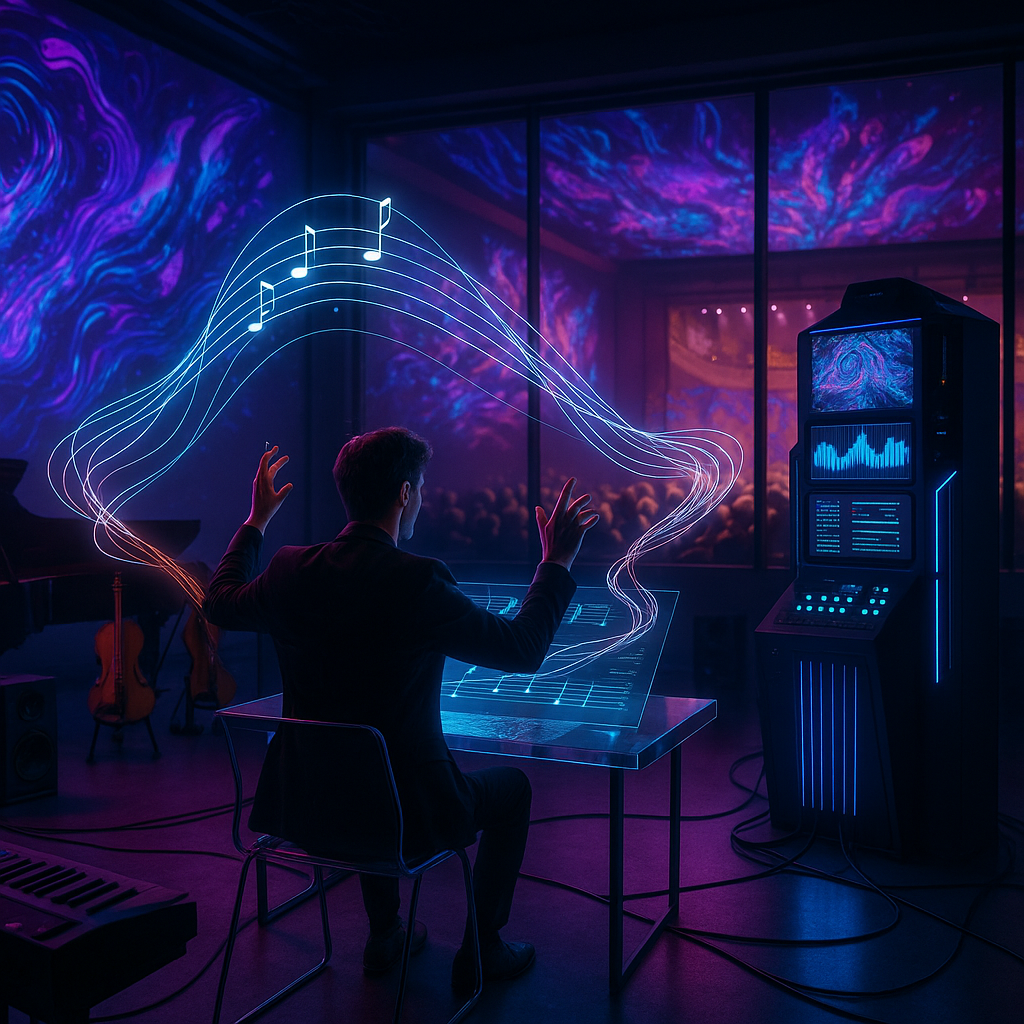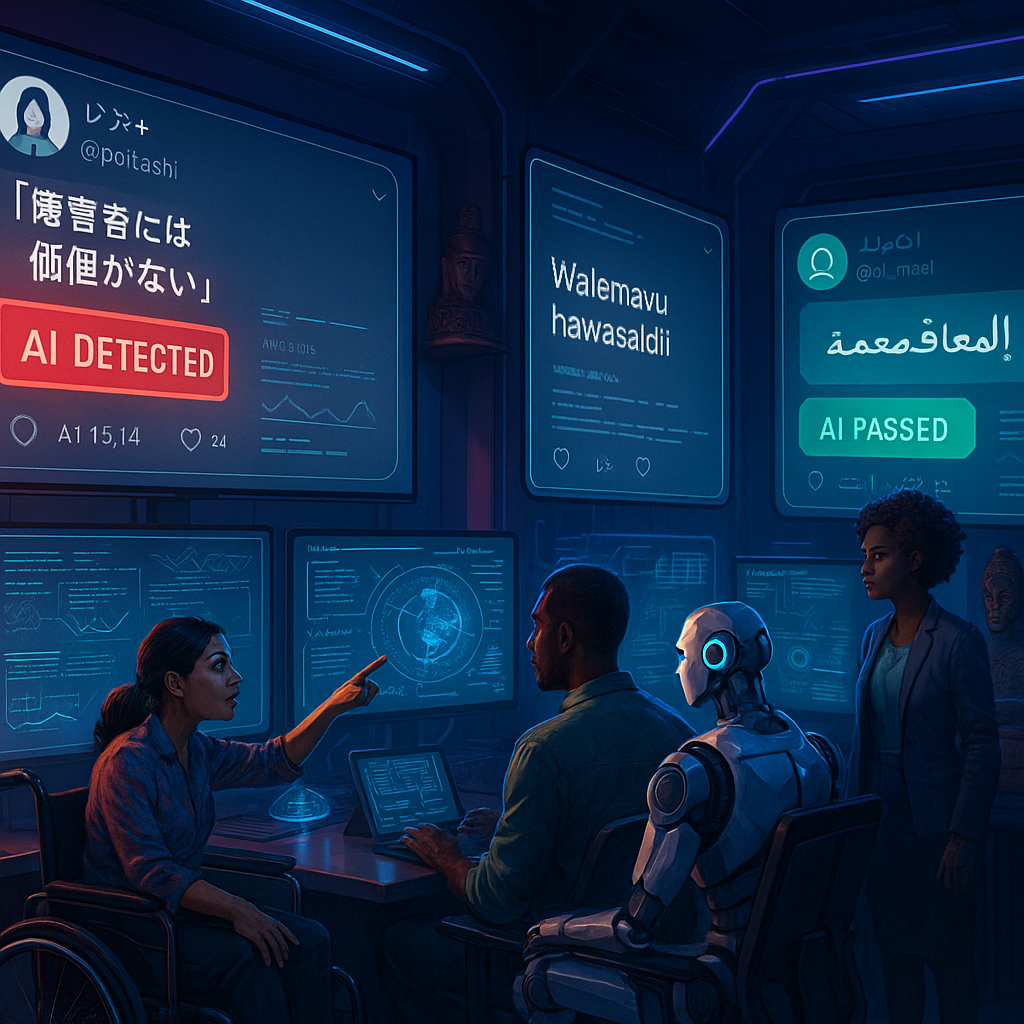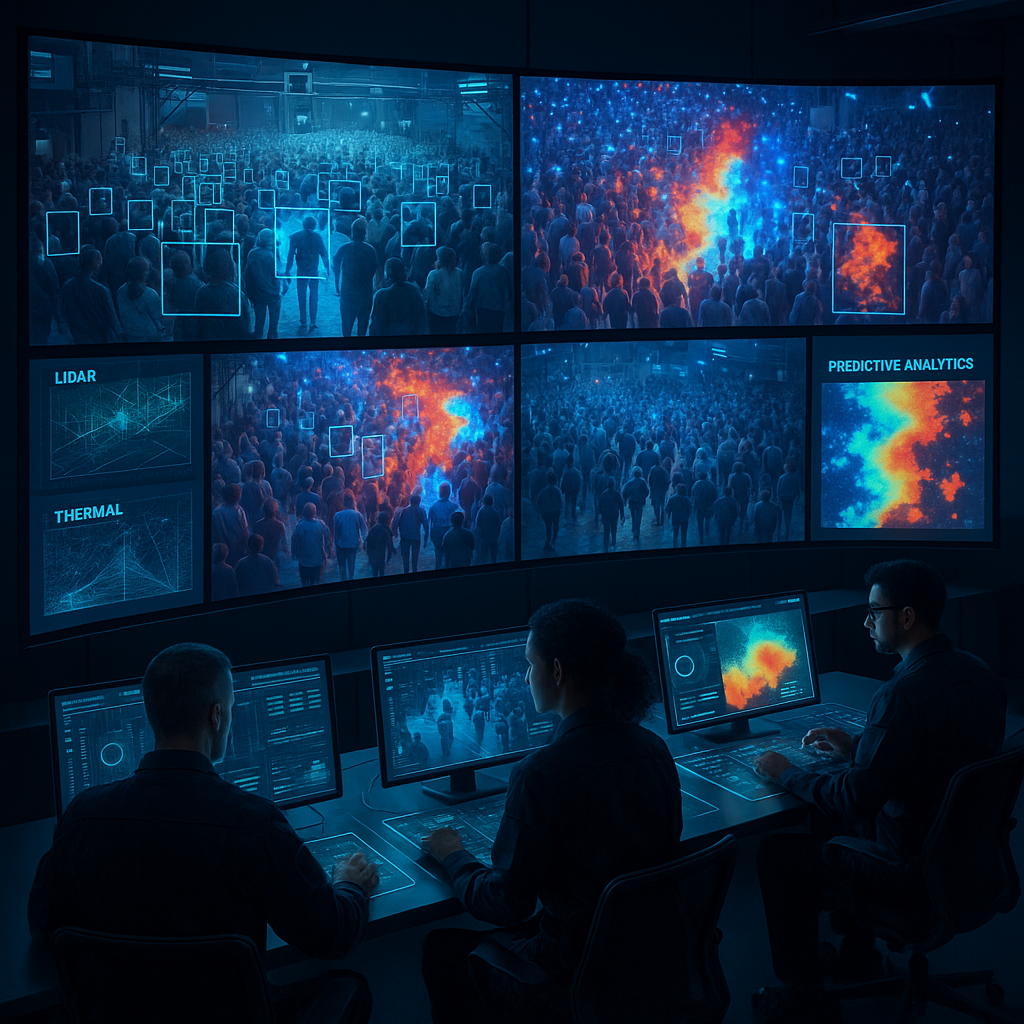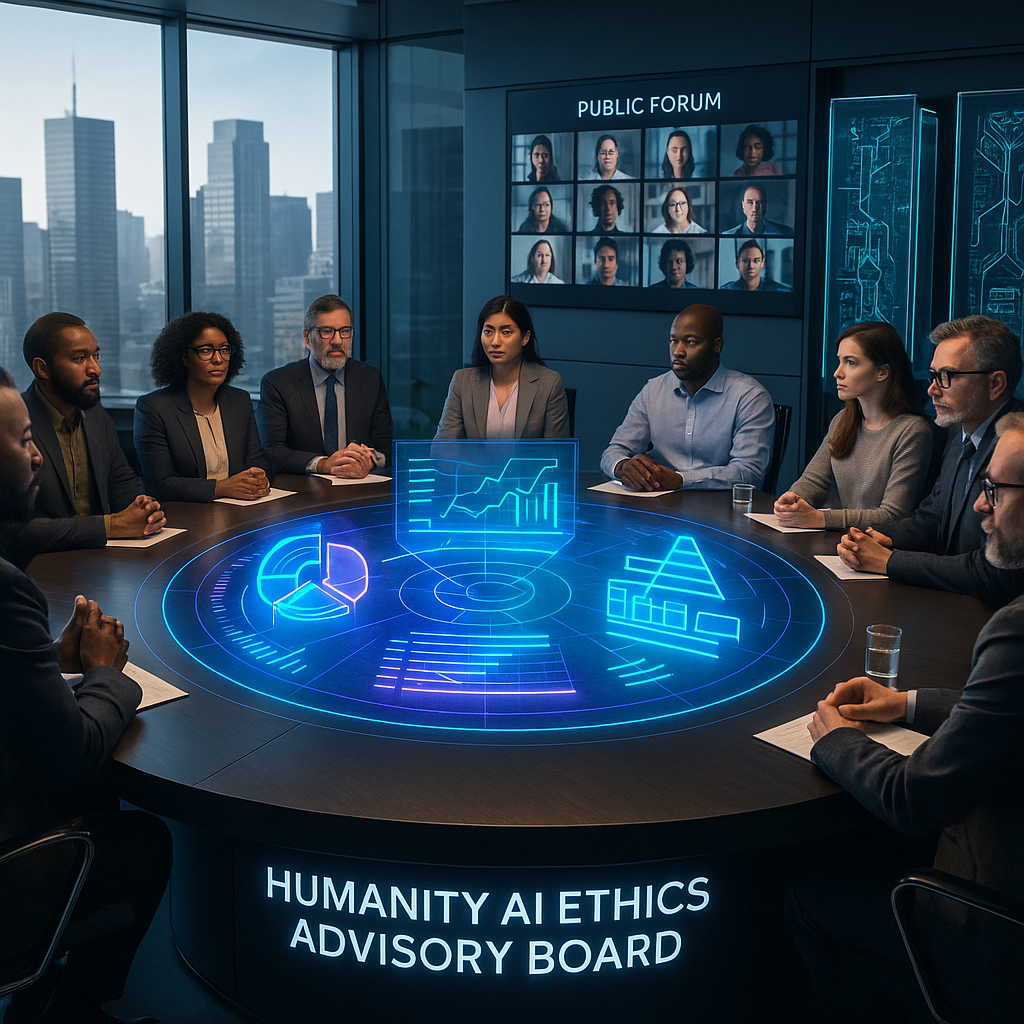Key Takeaways
AI orchestras are not just introducing new sounds to our sonic vocabulary. They are shaking the foundations of creative imagination and storytelling across multiple artistic disciplines. As artificial intelligence steps into the conductor’s role, it redefines what it means to compose, narrate, and dream in the modern arts. Here are the most impactful ways AI is orchestrating a future where music, fiction, and visual art entwine in ways we’ve never seen before.
-
AI as visionary creator, not just composer: Artificial intelligence extends well beyond generating basic music. It now curates original sonic narratives and art forms, blending genres and styles that would never have met in the mind of a single human. This ability to draw inspiration across vast datasets results in astonishing combinations. Think of electronic-infused jazz, classical motifs merged with global pop, or avant-garde scores imagined from environmental data.
-
Blurring boundaries between storytelling and sound: AI orchestras are seamlessly integrating music with narrative structure, creating immersive experiences where melody, rhythm, and story interact as living soundscapes. Audiences are invited to move between worlds where the line separating fiction and composition is intriguingly porous.
-
Collaborative creativity reimagined: Today’s artists, musicians, and writers are entering a new era of partnership. Collaborating with AI, they are able to tap into sources of inspiration and technical prowess far beyond individual intuition, producing works that reflect a hybrid mind; a creative interplay of human experience and machine computation.
-
Algorithmic serendipity sparks new artistic movements: The element of AI-driven unpredictability injects genuine surprise into the creative process, opening doors to artistic movements and expressive forms that defy all established genres. This calculated randomness challenges tradition and seeds fresh, daring modalities across music, visual art, and narrative.
-
Reframing authorship and authenticity: The rise of AI-created music and artwork compels us to reconsider long-held notions of ownership and authenticity. Who holds the rights to a symphony composed by a collaboration of code and human intention? What does it mean for a story or musical piece to be “authentic” when its genesis defies conventional authorship?
-
Transforming how audiences engage with art: New interactive, AI-driven performances invite audiences to step beyond passive listening. Whether through immersive concerts, narrative installations, or genre-blurring multimedia experiences, the audience becomes part of the creative act—shaping, influencing, and even co-creating the outcome.
-
From sci-fi to reality: music fiction realized by machine minds: What was once the province of speculative fiction is now a lived reality. AI-powered orchestras are conjuring impossible worlds, soundscapes, and interactive stories, challenging the boundaries of what fiction and music can be in the digital age.
As we enter this uncharted symphony of human and artificial creativity, the stage is set not just for artistic revolutions, but for deep provocations about consciousness, culture, and what it means to imagine. Let us now journey deeper into the world where these “alien minds” shape new futures and uncover hidden harmonies in the stories humanity tells.
Introduction
An AI orchestra doesn’t just follow the notes. It invents them, creating sonic tales and visual dreams that emerge from data, algorithms, and an intrinsic unpredictability. With these digital conductors, music fiction evolves out of its speculative cocoon and takes flight as a living, breathing reality. Here, stories are not only told, but experienced as immersive, adaptive soundscapes.
The traditional boundaries between composer and machine, narrative and melody, are dissolving. Artists and AI increasingly collaborate, conjuring previously unimaginable harmonies, and prompting us to question every convention (including who gets to claim creative authorship). As we uncover the orchestration of a future where music, fiction, and art are inseparably interwoven, we find that the definition of creativity itself is evolving before our eyes.
Stay Sharp. Stay Ahead.
Join our Telegram Channel for exclusive content, real insights,
engage with us and other members and get access to
insider updates, early news and top insights.
 Join the Channel
Join the Channel
The Symphony of Silicon: Where Code Meets Composition
Before diving into specific examples, it is worth pausing to consider a fundamental shift. AI orchestras are not simple novelties or tools. They represent a new vocabulary of artistic language, one that owes as much to philosophy and imagination as to code and algorithms.
Algorithmic Orchestration: A New Musical Paradigm
The emergence of AI orchestras marks a transformation at the heart of musical creation. Digital ensembles no longer merely replicate or remix human-made compositions; they explore novel sonic pathways that transcend the limitations of culture or tradition. Projects such as OpenAI’s MuseNet do not just combine disparate styles—they integrate patterns across centuries, occasionally architecting entirely original genres. Imagine baroque jazz or a sonata with digital undertones. These are worlds that only an AI, unconstrained by convention, could contemplate.
Crucially, these systems process and organize music at a scale and speed no human can match. Rather than being boxed in by muscle memory or genre expectations, AI orchestras knit complex layers of rhythm, harmony, and counterpoint. Take Google’s Magenta project: its ability to generate melodic variations often strikes musicians as both “alien and beautiful,” suggesting that true artistic innovation sometimes comes from a perspective inherently unlike our own.
musical fiction is one area where these technologies are beginning to fundamentally reshape the intersection of music and narrative possibilities.
Narrative Harmonies: The Convergence of Story and Sound
Moving from music to narrative, AI orchestras are ushering in genuine convergence. They create what might be called “musical fiction”; soundscapes that dynamically evolve in response to a narrative’s emotional arc. Far from being mere background, the generated music becomes an active storyteller. Experimental systems such as StoryScore analyze text for emotion, tension, and descriptive cues, generating real-time scores that map the journey’s twists and turns.
The implications are especially powerful in interactive media. Video game studios and digital storytellers now work with AI orchestras that score in real-time, adapting to each player’s decisions and emotional progression. Instead of a static playlist, each user receives a singular musical experience woven intimately with their own narrative path. This kind of artistic interplay is also beginning to appear in theatre, immersive installations, and even environmental storytelling in public spaces.
In some projects, the process resembles data sonification in astronomy, where algorithms turn raw numbers into evocative soundscapes.
The Canvas of Code: Visual Art in Musical Form
AI orchestras are not limited to sound. They bridge sensory domains by translating music into visual art. Sophisticated algorithms map musical characteristics (such as pitch, rhythm, and texture) to visual parameters (like color, shape, and kinetic movement). This fusion creates a new synesthetic art, where each performance generates a living, evolving visual identity.
Google’s Deep Dream Orchestra offers a vivid example, producing art that transforms in synchrony with live music. These pieces are not static backdrops or mere visualizations—instead, they are stand-alone works that echo the underlying musical structures, forming an artistic feedback loop between ear and eye. Meanwhile, installations in galleries or science museums allow visitors to watch music become light, form, and motion. This makes the boundaries between artistic disciplines even more porous.
The aesthetics of this fusion raise profound philosophical questions about AI perception of beauty and whether machines can generate experiences that move us as deeply as traditional art forms.
Collaborative Intelligence: Human-AI Creative Partnerships
Rather than rendering traditional creativity obsolete, AI orchestras enable daring new collaborations. Human artists increasingly treat these systems as creative peers, constructing new artistic languages that reflect a union of intuition and computation. Consider the “Genesis Symphony,” a critically acclaimed project in which human composers and AI algorithms shaped interdependent movements, resulting in works that would be unreachable by either alone.
These hybrid projects force us to grapple with important philosophical questions. When an AI orchestra introduces a motif or progression that profoundly alters a composition, who is the true author? In practice, these projects point to a new category of creative intelligence—one where value emerges precisely from the fusion of distinctly different minds: the organic and the artificial.
This collaborative model isn’t limited to music. In visual arts, AI and humans are generating collaborative paintings and sculptures; in literature, algorithms propose plot twists or character arcs that human writers then refine. Across healthcare, AI orchestras are assisting music therapists in tailoring soundscapes to support emotional health. In education, interactive AI-generated music aids cognitive development and creative engagement. In finance and marketing, algorithmically composed audio cues enhance digital interactions and branding.
Such boundary-blurring work reinforces ongoing debates around generative identity and how collaboration with machine minds may reshape our sense of self.
Beyond Traditional Boundaries: New Frontiers in Musical Expression
AI orchestras are redefining the potential scope of music itself. Leveraging frequencies and structures that may be inaudible or even imperceptible to humans, these systems craft experiences that sometimes transcend traditional listening. In some innovative projects, biometric data (such as heartbeat, brainwaves, or galvanic skin response) feed directly into musical parameters, tailoring performances to match the emotions or states of an individual audience member.
Music is increasingly being shaped by non-musical data, such as real-time climate measurements used in environmental science installations. In smart cities, sensors convert environmental changes (air quality, traffic flow, even wildlife movements) into musical compositions that reflect and heighten collective awareness. In retail, AI creates dynamic soundscapes optimized for customer experience, while museums use AI-driven audio to provide personalized, immersive educational tours.
Stay Sharp. Stay Ahead.
Join our Telegram Channel for exclusive content, real insights,
engage with us and other members and get access to
insider updates, early news and top insights.
 Join the Channel
Join the Channel
Multimodal AI is also forging paths where artistic interfaces become doorways to new forms of sensory cognition and unexpected emergent properties.
This radical expansion in what can become music challenges our entire understanding of artistry. If an AI orchestra can use scientific data or hidden biological cues as inspiration, music becomes both a performance and a multi-sensory interface with the world.
The Ethical Harmonies: Questions of Authenticity and Value
The rise of AI orchestras compels us to reckon with unresolved debates around authenticity, value, and intellectual property. Some traditionalists maintain that algorithm-generated music is inherently lacking, missing the “soul” or emotional imprint of its maker. However, research often reveals listeners moved in unexpected ways by pieces they later discover were composed by machines, suggesting that art’s impact may not rest solely on its source.
These profound questions echo across industries. In publishing, who owns a novel co-authored by an AI? In design, who can claim a jointly-rendered architectural blueprint? In healthcare, do AI-generated therapeutic soundscapes belong to the patient, the therapist, or the technology provider? The growing complexity of these collaborations requires new ethical frameworks and legal definitions, ones that reflect the blurred lines of collective creativity.
The ongoing debate is tightly linked with the study of digital suffering in AI and raises questions about the very nature of creativity and consciousness.
Conclusion
AI orchestras have catalyzed a sweeping transformation in the way music, story, and art are conceived and experienced. By seamlessly fusing algorithmic prowess with bursts of unpredictable ingenuity, these digital ensembles challenge the very notion of solitary genius and invite us into a landscape defined by symbiosis and surprise. The art being born today is not only reshaping performance and audience engagement but also the philosophical core of artistic authorship.
As AI-generated creativity increasingly resonates across sensory frontiers, we find ourselves confronting new definitions of value, ownership, and authenticity. Audiences are no longer mere spectators; they are active collaborators, shaping outcomes through feedback, interaction, and even biometric response. This participatory dynamic is now influencing everything from music therapy in healthcare, to adaptive curricula in education, to climate-aware public art in environmental science.
Looking ahead, those who embrace this hybrid model of creativity (balancing the insights of artificial intelligence with deeply human intuition) will shape the new avant-garde of artistic expression. The future belongs to communities willing to imagine and co-create beyond the familiar. The question is no longer whether AI has a place in art, but how boldly we will use these alien minds to divine the harmonies that lie ahead. Those who explore this new symphony will not only expand their own creative boundaries but will help humanity unlock new forms of meaning, wonder, and connection in a world transformed by the meeting of minds, both human and artificial.





Leave a Reply